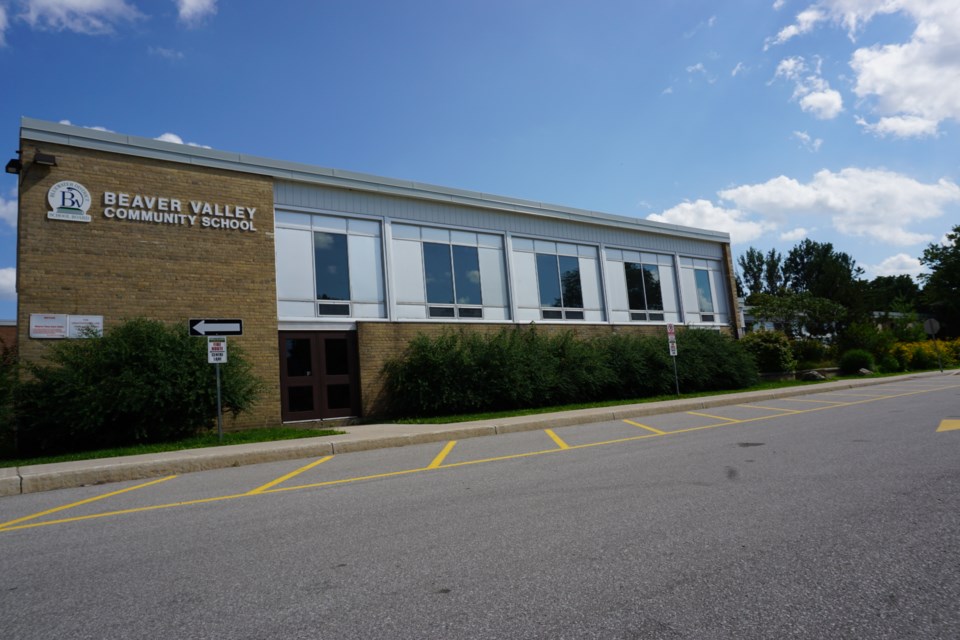The Grey-Bruce region is well-positioned for the reopening of schools, says the medical officer of health for Grey Bruce Health Unit (GBHU), Dr. Ian Arra.
“We have zero active cases and it's very timely to have that confidence as we begin the reopening of our schools,” said Arra during a Facebook Live town hall event held last night.
Hosted by GBHU, the town hall event allowed Arra to answer questions from parents and guardians as area schools look to welcome back students on Sept. 8.
“I am cautiously optimistic. There is increased risk with any increased activity. However, the risk will never be zero. Even if all kids stayed home and the schools were closed completely,” Arra said.
Similar to his messages in stages one and two of the provincial reopening, Arra said the goal is to reopen as fast as possible, as safely as possible.
“We have every measure we can in place to ensure a safe reopening and to ensure the safe return to school so that our kids can have the social interaction that they need,” he said, adding the school system is also one of the most successful tools in protecting our society from child and domestic abuse.
“Without that institution, without that interaction, without the multiple layers of good quality service that's invested in the school system, we might miss out on these kids who are suffering in their homes,” he continued.
As schools begin to reopen, Arra says parents' role in screening their kids for signs and symptoms of COVID-19 before coming to class will be critical.
He points to the health unit and school board websites for tips on how to screen kids and how to provide them with the education they need to protect themselves.
“Washing hands frequently, watching the distance between each other, and wearing a mask correctly… These things have been the key in our success for the past five months and they're going to be key in protecting our kids in our community going forward,” Arra said.
In the instance that a child tests positive for COVID-19, Arra said it is likely that the transmission happened 15 days prior to confirming the positive test results, and there is no need to panic.
“If you hear of a case in the school where your kid is and you do not receive a call from public health, that's a really good thing. That means your kid and your family did not have enough risk for the call,” Arra said.
If a child were to test positive for COVID-19, who had been actively attending school, contact tracing protocols would be initiated.
“We have robust surveillance systems – passive, active, sentinel, and other types of surveillance – and they allow us to ensure that there is no secondary transmission,” he said.
Public health officials would work with school officials to determine who has been exposed and the level of exposure.
Family, close contacts of the student, and anyone that may have been exposed will be asked to get tested.
“Testing everybody in the class or the school or those without symptoms is not a good practice. It's not good science, and it's unnecessary,” Arra said, adding that unnecessary testing creates the potential for false positives and could “clutter the system” with tests that are not needed.
When it comes to students wearing masks in school, Arra said it's a great concept, but he understands the reality of the situation.
“My daughter is three-years-old and she's excited about wearing a mask whenever she sees a mask. But, she puts it on and in five minutes, you can find the mask anywhere but on her face,” Arra said.
“At the end of the day, if not all of the kids wear a mask, it's not the end of the world. Masks are just an added layer of five to 10 per cent extra protection, and if 80 per cent of the kids wear them, that will be optimal.”
According to Arra, provincial guidelines dictate that an outbreak will only be declared when a transmission happens within the school, where two cases have been linked to each other.
“I have no doubt we'll see cases going forward. But at the same time I have full confidence we will control the transmission and nip it in the bud,” he said.
Parents and guardians with additional questions are encouraged to visit the Bluewater District School Board or Bruce Grey Catholic District School Board websites for more information on back-to-school safety protocols.



